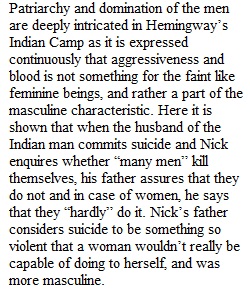


Q After reading Hemingway’s “Indian Camp,” consider how binary gender works intersectionally to structure the narrative. How does reading binary gender intersectionally help us to understand why Nick thinks he “will never die” at the conclusion, even though he has just seen a dead man? Using the Moodle recording interface (see instructions below), create a 2-3 minute audio recording in which you explain how the binary opposition of gender works intersectionally in “Indian Camp” to position Nick, the main male character, in specific ways that give him or deny him authority in relation to the other men in the story and to the Indian woman. Think especially here about the story’s point of view and the disjunctions between expected gender behavior and the lived experience of individuals.
View Related Questions